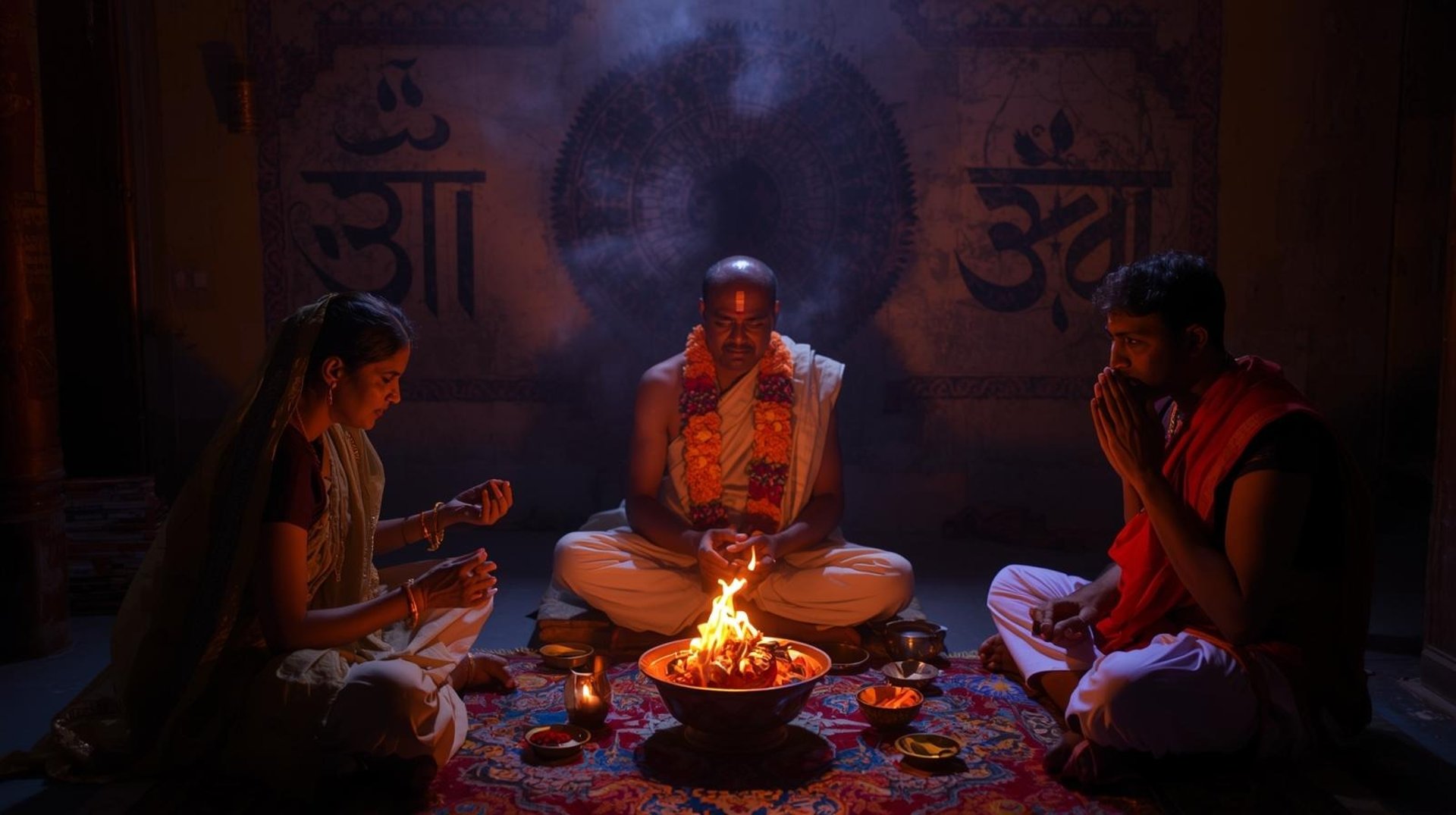
Tripindi
The Tripindi Shraddha (त्रिपिंडी श्राद्ध) — also known as the Tripindi ritual — is an important Hindu ceremony performed to pacify and liberate ancestral souls (Pitras) who may be unsatisfied or stuck due to neglected or incomplete shraddha rites in previous years.
It is a powerful ancestral atonement ritual that combines elements of Pind Daan, Tarpan, and Shraddha to help departed souls attain peace (moksha) and bless the descendants.
🕉️ Meaning of Tripindi
Tri = Three
Pindi = Balls (rice or flour offerings symbolizing the body of the soul)
So, Tripindi means “offering of three rice balls”, typically made for three generations of ancestors:
Father, grandfather, great-grandfather
Mother, grandmother, great-grandmother
These three pinds represent the paternal or maternal ancestral line.
🌿 Purpose of Tripindi Shraddha
Tripindi is performed when:
Regular Shraddha rituals have not been performed for three consecutive years or more.
There is Pitru Dosh (ancestral imbalance) in one’s horoscope.
The family faces repeated obstacles, health issues, infertility, or financial troubles.
Someone experiences recurring bad dreams involving ancestors or snakes — considered a sign of unsatisfied souls.
By performing Tripindi, the family restores peace in the ancestral realm (Pitru Loka) and removes Pitru Dosha from the lineage.
📜 When Tripindi Is Performed
Can be done any time of year, but especially auspicious during:
Pitru Paksha (Shraddha fortnight) — September–October
Amavasya (New Moon) days
Tithi (death anniversary) of the ancestor
Should be done in the morning before noon, with guidance from a Purohit (Vedic priest).
🔱 Ritual Procedure (Overview)
Performed by the eldest son or descendant under a priest’s guidance:
Purification & Sankalp:
The performer takes a holy bath and makes a sankalp (vow) stating the names and gotra (family lineage) of the ancestors for whom the ritual is performed.Invocation (Aavahan):
The priest invokes the ancestors, requesting them to accept the offerings.Preparation of Pinds:
Three pinds (balls) are made from cooked rice, sesame seeds, barley flour, ghee, milk, and honey.Offering (Daan):
The pinds are offered with mantras and prayers on kusha grass plates, accompanied by tarpan (water offering with black sesame seeds).Fire Offering (Havan or Homam):
Ghee and grains are offered into the sacred fire while chanting Pitru Mantras.Feeding & Charity:
Cows, crows, and Brahmins are fed — as they are considered intermediaries who carry the offerings to the ancestral realm.Completion:
The ritual concludes with blessings and distribution of prasadam. The house is then considered purified and free of ancestral unrest.
📍 Important Places for Tripindi Shraddha
Some pilgrimage sites in India are especially known for performing Tripindi with full Vedic rites:
Place Location Significance Trimbakeshwar Temple Nashik, Maharashtra One of the most famous centers for Tripindi Shraddha; also for Kaal Sarp Dosh Puja. Gaya Bihar Considered the holiest site for all Shraddha and Pind Daan rituals. Pisharnath Mahadev Temple Matheran, Maharashtra Believed to free souls from earthly attachments. Kapileshwar Temple Kolhapur, Maharashtra Popular for Tripindi and Pitru rituals. Siddheshwar Temple Solapur, Maharashtra Known for ancestral pujas and salvation rites.
🔮 Mantras Commonly Used
Pitru Tarpan Mantras
Tripindi Shraddha Sankalp Mantra
Mahamrityunjaya Mantra for peace and liberation
These are chanted during offerings to invoke the ancestors and seek their blessings.
🌺 Benefits of Performing Tripindi Shraddha
Brings peace and salvation to wandering ancestral souls.
Removes Pitru Dosh, thereby reducing struggles in family life.
Promotes harmony, health, prosperity, and spiritual growth in descendants.
Helps the family lineage progress without karmic hindrance.
🙏 Spiritual Significance
Tripindi is not just a ritual — it’s an act of remembrance and gratitude.
It honors the eternal link between the living and the departed, symbolizing that peace for ancestors brings peace for descendants.
Would you like me to describe the exact step-by-step procedure for Tripindi Shraddha at Trimbakeshwar Temple, including the items (samagri) needed and ideal dates (muhurta)?